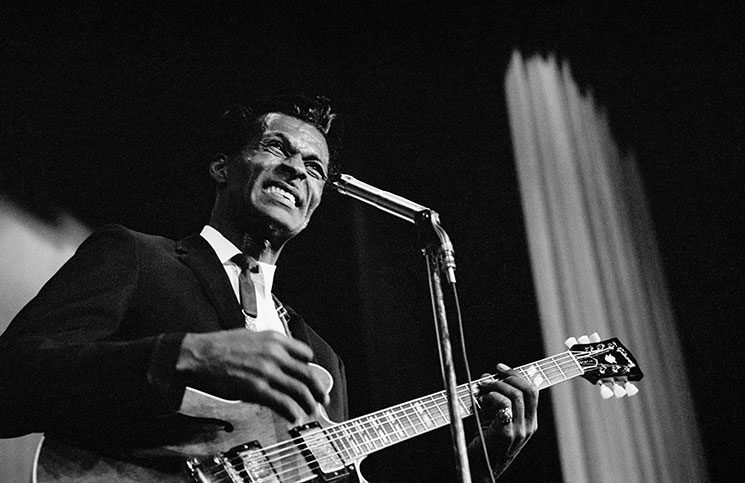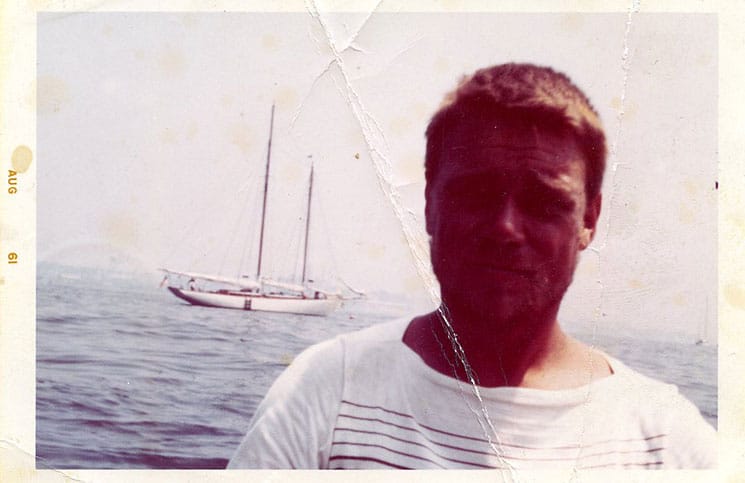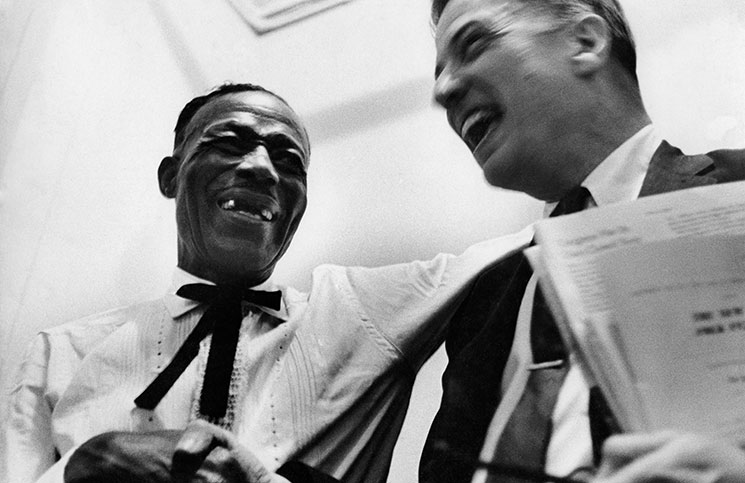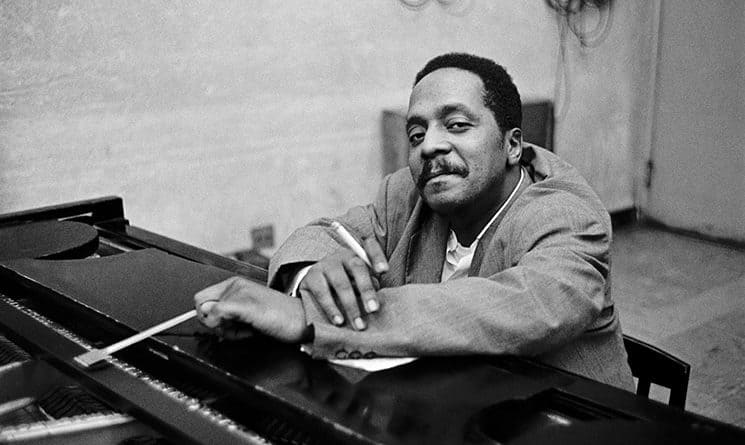In the 1960s in New York, Robert James Campbell took evocative photos of many of the world’s best jazz musicians — John Coltrane, Dave Brubeck, Count Basie, Dizzy Gillespie, Wayne Shorter. And not just jazz artists — Campbell took striking pictures of early rock greats like Chuck Berry, blues legends like Son House, bluegrass pioneers like Bill Monroe, and folk icons like Richie Havens.
He also shot countless street portraits in Washington Square Park, chronicled Vietnam War protests and civil rights rallies, and captured other images reflecting the spirit and culture of post-war New York.
Campbell has strong ties to the Seacoast. He graduated from Portsmouth High School, spent a year at the University of New Hampshire, and, for a while, ran a coffeehouse in Portsmouth that hosted live music.
So how come most folks around here have never heard of him?
Until recently, Campbell’s work was mostly unknown. Although he was born into a wealthy family and had a fruitful career, he fell into total obscurity and died homeless, penniless, and alone in Burlington, Vt.
“It’s still very much a cold case when it comes to what went wrong and why this steep decline,” said Jessica Ferber, author of a new book about Campbell’s life and work. “I couldn’t understand it. I still don’t. … It’s still a mystery.”
Ferber’s book, “Rebirth of the Cool: Discovering the Art of Robert James Campbell,” came out in December. It offers a short biography of Campbell and shows an impressive sampling of his remarkable photography.
For those interested in jazz, or music history in general, the photos are jaw-dropping. There’s Bud Powell, a cigarette between his fingers, leaning on his piano and gazing into the camera. There’s a mostly toothless Son House shaking hands with the producer John Hammond, both of them laughing heartily. There’s Chuck Berry howling into the microphone at the Newport Jazz Festival.

A photo Campbell took of Chuck Berry at the Newport Jazz Festival. From Rebirth of the Cool by Jessica Ferber, published by powerHouse Books.
It was only after Campbell’s death that he came to the attention of Ferber. Then 22, she was a recent graduate of the University of Vermont, where she had studied photography. The UVM photo department was looking for a volunteer to comb through six boxes of belongings left behind by a homeless man who had recently died. Urged on by her former photography professor, Ferber took the job and discovered a stash of incredible photos.
Ferber spent the next 13 years trying to find out everything she could about the mysterious man behind the lens, who she calls “Bob.”
“When he died, he left behind these little clues,” Ferber said. “They’re all very much disconnected, but it was almost like a treasure map. You’ve got just enough information that one point leads you to the next point.”
That map eventually led Ferber to Portsmouth, where Campbell lived, on and off, throughout his teen years and early 20s.
Campbell’s maternal grandfather was John Jay Nash, a wealthy real-estate tycoon and inventor who built a family home in Portsmouth in the early 1900s. Campbell was born in New York in 1936. His father either died or left when he was young, and his mother apparently began suffering from severe depression. From age 11 on, Campbell was raised largely by his aunt and uncle in Vermont. But he moved back in with his mother in Portsmouth for his final year of high school.
After a year at UNH, Campbell traveled to Texas and enlisted in the Army, where he played bass in the Army jazz band and began photographing other musicians. He moved back to Portsmouth a few years later and spent the summer on his 20-foot sailboat, The Adventure.

Campbell in Portsmouth with his sailboat, The Adventure, in 1961. From Rebirth of the Cool by Jessica Ferber, published by powerHouse Books.
In the early ’60s, Campbell managed a coffeehouse in Portsmouth called The New World Gallery. While employed there, he foraged an old grand piano, had it tuned, and started hosting regular open mics. “People would just come and hang out and play music,” Ferber said.
Ferber’s outline of Campbell’s time in Portsmouth is spotty. She traveled to the city to do research about 10 years ago. What did she find out? “Nothing,” she said with a laugh. She looked for his mother’s old house — which Campbell later inherited — but she couldn’t find it. She showed pictures of Campbell to people around town, but none of them recognized him.
She does know that Campbell moved to New York City on his 25th birthday and settled in the West Village. He began doing freelance photography for The Village Voice and Downbeat Magazine and became a fixture at New York’s jazz and folk clubs, where he was known by his nickname, “Soupy.” Many of his best photos were not submitted for assignments and were never published. “It was a lot of his personal hobby photography,” Ferber said.
But Campbell earned the trust and respect of the musicians and was able to capture intimate, unguarded photos of them.
“The reason he started taking pictures is because he was always hanging out at the clubs. He was a club rat,” Ferber said. “And so he became a familiar face to people and didn’t seem like an obtrusive photographer.”

Campbell’s photo of Son House shaking hands with John Hammond in New York in the early 1960s. From Rebirth of the Cool by Jessica Ferber, published by powerHouse Books.
Campbell left his mark in some ways. He took the cover photo for one of Bud Powell’s albums, according to Ferber, and even traveled to Germany to photograph the Modern Jazz Quartet. (Plus, Campbell’s story — and the story of Ferber’s obsession with him — was the inspiration for bestselling author Chris Bohjalian’s 2007 novel, “The Double Bind.”)
But, with an abundance of photographers in New York, Campbell mostly stayed under the radar. In the late ’60s, he moved to Los Angeles (along with folk musician Tim Buckley and his guitarist, Lee Underwood, both close friends). There, he gave up photography and started building theater sets in Hollywood.
Campbell returned to Portsmouth in the early 1980s. He inherited the family house on North Street in 1987 following his mother’s suicide. After that, his life is a blur. He suffered a stroke while living alone in Portsmouth, which may have precipitated a mental-health decline. He eventually lost the house, and it’s uncertain where he went until he turned up at a homeless shelter in Burlington in 1995.
“I really don’t understand what happened between L.A., Portsmouth, and Burlington,” Campbell said. “That whole part is just a gaping hole, and I can’t find anyone who know

